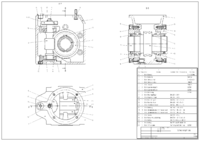
Photo from wikipedia
Background: Poland syndrome is historically associated with hypoplasia of the pectoral major muscle and abnormalities of the upper limbs. The authors propose an innovative procedure for correcting Poland syndrome thoracic… Click to show full abstract
Background: Poland syndrome is historically associated with hypoplasia of the pectoral major muscle and abnormalities of the upper limbs. The authors propose an innovative procedure for correcting Poland syndrome thoracic malformations using three-dimensional modeling. Moreover, the authors evaluated aesthetic improvement, satisfaction, and quality of life after reconstruction with computer-aided design customized silicone implants. Methods: Since 1993, the authors have treated 129 patients for Poland syndrome. Before 2007, the implants were made from plaster molds; since 2007, they have been made using three-dimensional computer-aided design. Patient satisfaction was assessed using a standardized questionnaire, and quality of life was evaluated using the Medical Outcomes Study 36-Item Short-Form Health Survey. Results: Lipofilling was performed in combination with computer-aided design in one-third of cases, and breast prostheses were required in 24 percent of cases. We found three exposed prostheses and two infections. Cosmetic results were excellent in more than 90 percent of cases, and more than 80 percent of patients were very satisfied or satisfied, with no significant difference between men and women (p = 0.382). The Medical Outcomes Study 36-Item Short-Form Health Survey scores revealed significant improvements in role emotional (p < 0.05), emotional well-being (p < 0.001), and social functioning (p < 0.001). Conclusions: Correcting Poland syndrome using a computer-aided design silicone implant fulfilled aesthetic and psychological demands, and significant improvements were seen in quality of life. The technique is simple and reliable and yields high-quality results, and three-dimensional computer-aided design has optimized the authors’ reconstructions. Nevertheless, associated procedures and secondary corrections remain necessary to obtain optimal results. CLINICAL QUESTION/LEVEL OF EVIDENCE: Therapeutic, IV.
Journal Title: Plastic and Reconstructive Surgery
Year Published: 2018
Link to full text (if available)
Share on Social Media: Sign Up to like & get
recommendations!